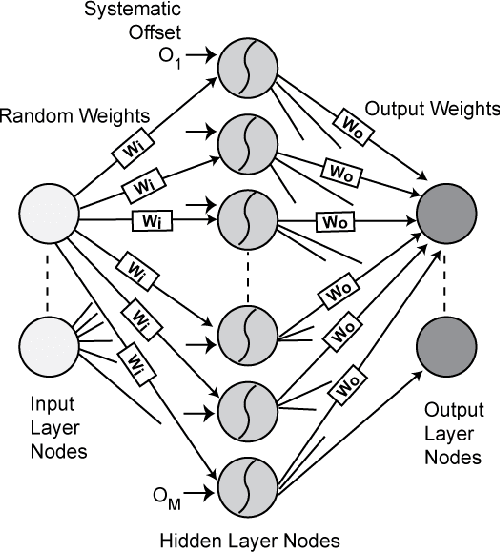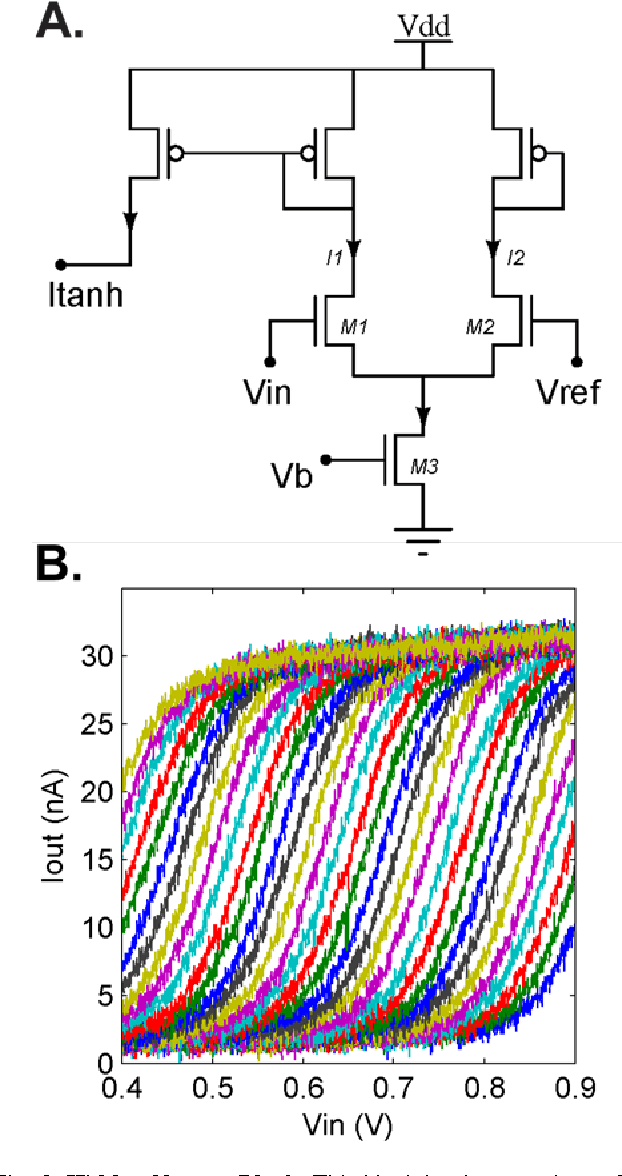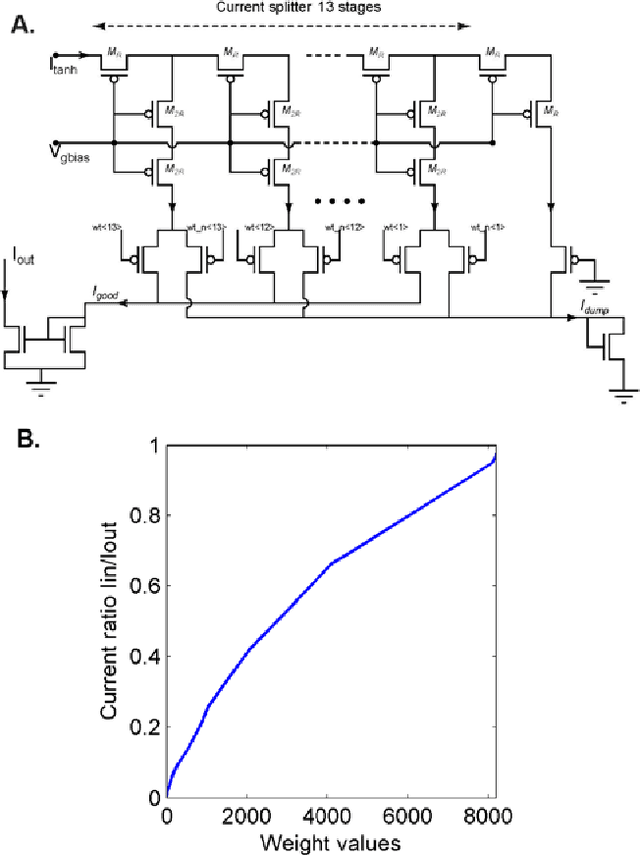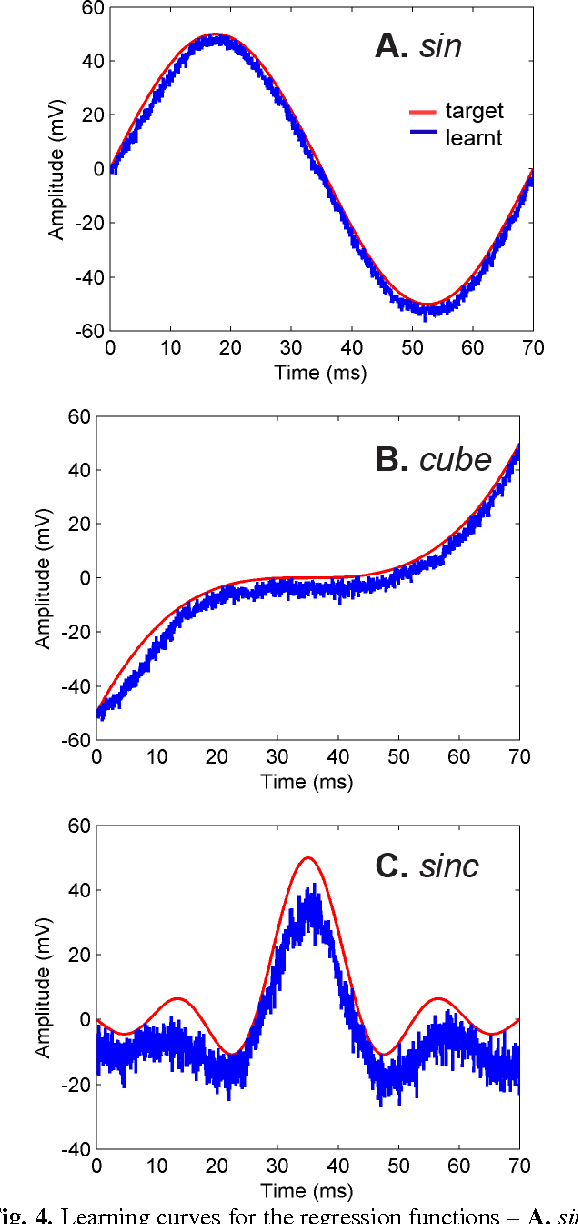A neuromorphic hardware framework based on population coding
Paper and Code
Mar 02, 2015



In the biological nervous system, large neuronal populations work collaboratively to encode sensory stimuli. These neuronal populations are characterised by a diverse distribution of tuning curves, ensuring that the entire range of input stimuli is encoded. Based on these principles, we have designed a neuromorphic system called a Trainable Analogue Block (TAB), which encodes given input stimuli using a large population of neurons with a heterogeneous tuning curve profile. Heterogeneity of tuning curves is achieved using random device mismatches in VLSI (Very Large Scale Integration) process and by adding a systematic offset to each hidden neuron. Here, we present measurement results of a single test cell fabricated in a 65nm technology to verify the TAB framework. We have mimicked a large population of neurons by re-using measurement results from the test cell by varying offset. We thus demonstrate the learning capability of the system for various regression tasks. The TAB system may pave the way to improve the design of analogue circuits for commercial applications, by rendering circuits insensitive to random mismatch that arises due to the manufacturing process.
 Add to Chrome
Add to Chrome Add to Firefox
Add to Firefox Add to Edge
Add to Edge